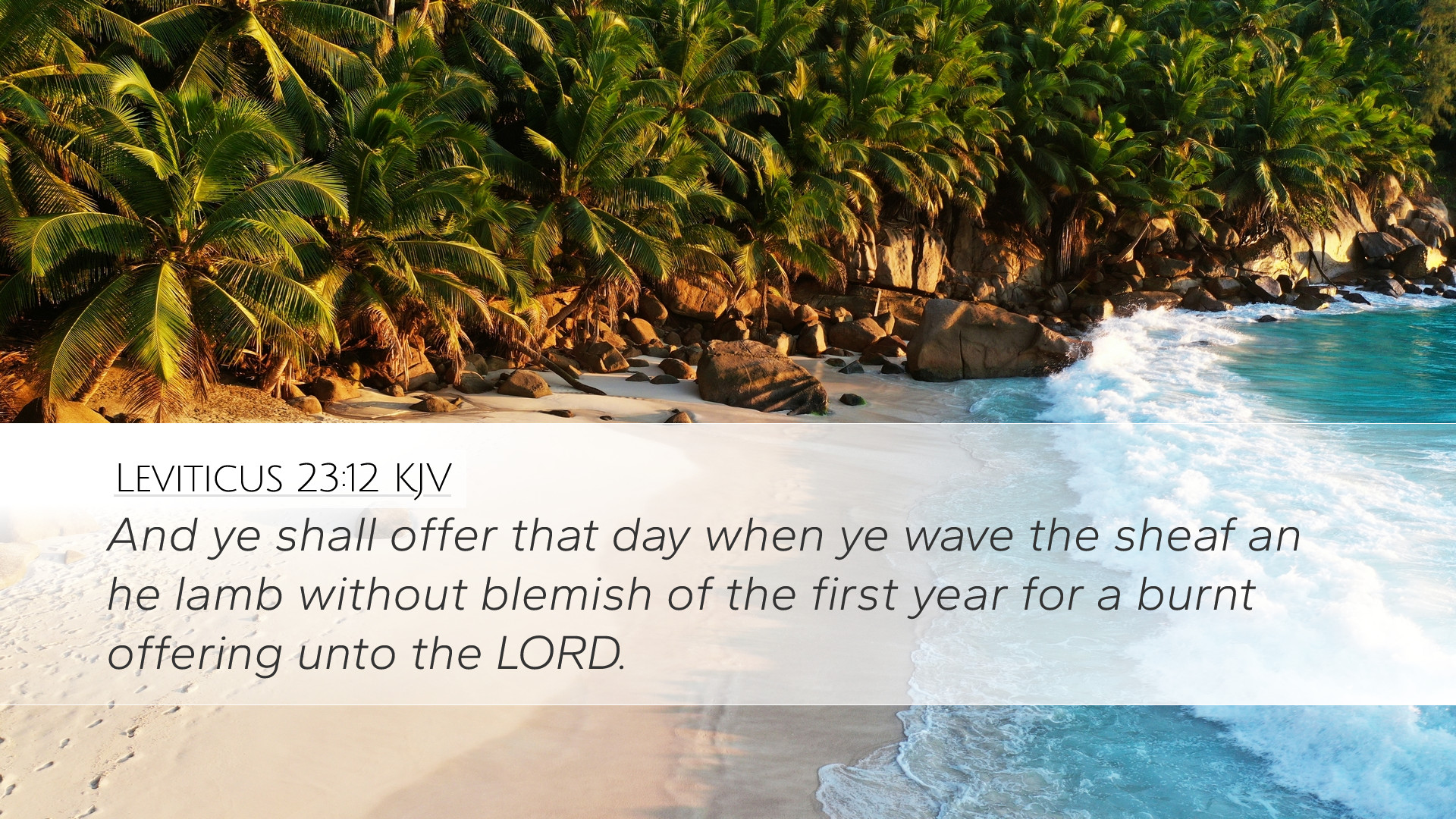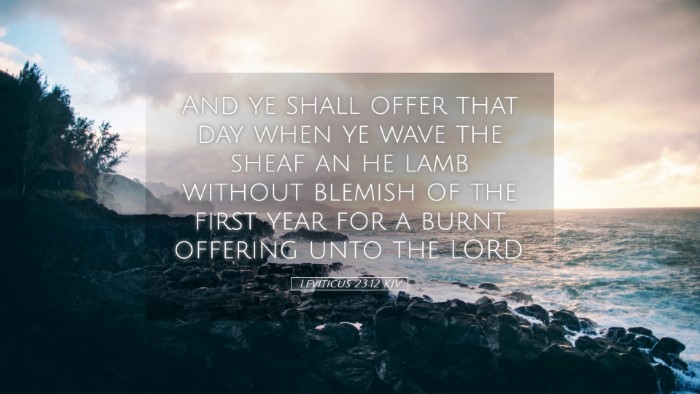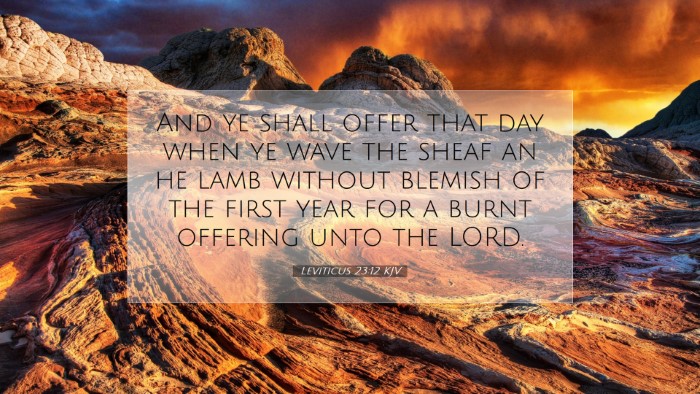Commentary on Leviticus 23:12
Leviticus 23:12 states: "And ye shall offer that day when ye wave the sheaf an he lamb without blemish of the first year for a burnt offering unto the Lord." This verse is part of a broader instruction regarding the Feast of Firstfruits, which takes place after the Passover and represents the acknowledgment of God’s provision.
Contextual Understanding
The context of Leviticus 23 is essential for understanding the significance of the offerings. This chapter outlines the various feasts that the Israelites are to observe, emphasizing the importance of holy convocations and the offerings that are to accompany each feast. The Feast of Firstfruits, specifically highlighted in verses 9-14, is a celebration of the agricultural harvest and serves as an acknowledgment of God's providence and blessing.
Insights from Matthew Henry's Commentary
Matthew Henry emphasizes the concept of consecration present in Leviticus 23. He highlights that the sheaf of the firstfruits is a representation of the harvest that is dedicated to God. The waving of the sheaf is an act of offering, where the people acknowledge that their sustenance is ultimately derived from God's generosity. Henry further points out that the burnt offering of an unblemished lamb signifies the necessity of purity and the need for atonement—a theme that resonates throughout the Levitical laws.
Albert Barnes' Perspective
Albert Barnes elaborates on the symbolism presented in this verse. He notes that the sheaf represents the first and best of the harvest, setting a precedent for offerings in worship. The unblemished lamb symbolizes innocence and sacrifice, pointing toward future sacrificial systems culminating in the ultimate sacrifice of Christ. Barnes underscores that this verse establishes a theological foundation for understanding offerings and the role of Christ as the Lamb of God.
Adam Clarke's Commentary
Adam Clarke discusses the ceremonial aspects intertwined with this offering. He asserts that the act of waving the sheaf was not merely a ritual but served as a visible expression of gratitude for God’s provision. Clarke conveys that the command to offer a lamb along with the sheaf emphasizes the need for holiness in worship. The combination of grain and animal offerings reflects a holistic relationship with God, combining physical sustenance with spiritual devotion.
Theological Significance
The offerings in Leviticus 23:12 have profound theological significance. They foreshadow the sacrificial system inherent in Christian theology. The notion of the “firstfruits” encapsulates the principle of giving God the best—trusted in faith that He will continue to provide. This principle is echoed in the New Testament as believers are encouraged to present their bodies as living sacrifices (Romans 12:1).
Application for Present-Day Believers
For contemporary Christians, Leviticus 23:12 encourages a mindset of gratitude and acknowledgment of God’s provision in their own lives. Recognizing Christ as the ultimate Lamb helps believers to understand the depth of the sacrificial system and its fulfillment in the New Covenant. The rhythm of giving thanks for God’s blessings inspires a lifestyle of worship that extends beyond mere rituals into daily living.
Conclusion
In summary, Leviticus 23:12 encapsulates essential themes of covenant faithfulness, sacrificial worship, and the acknowledgment of God’s provision. Insights from respected commentators like Matthew Henry, Albert Barnes, and Adam Clarke illuminate the text, providing depth and ensuring that its implications resonate with believers today. As we reflect on the offerings detailed in this verse, may we be encouraged to live lives marked by gratitude and devotion to our God.


